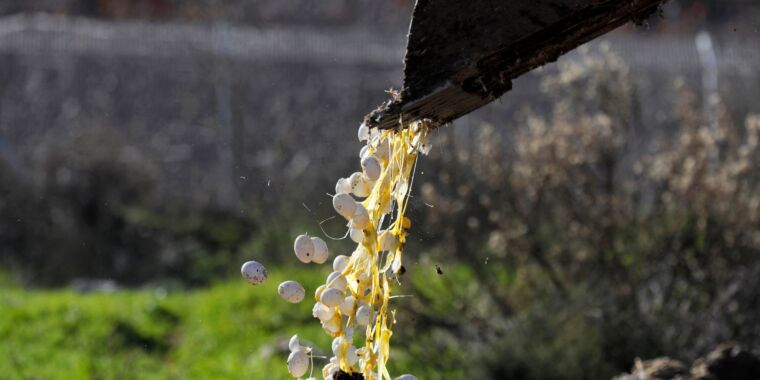Widespread Incidence of Highly Pathogenic Avian Influenza in Livestock
Recent reports have confirmed the escalating prevalence of highly pathogenic bird flu among US livestock, marking a pivotal moment as federal authorities publicly declared the virus’s infiltration into US dairy cows. The propagation of the virus has expanded to include dairy cows in at least five states, with additional instances of exposure observed in a single individual in Texas and an egg farm within the same state. These alarming developments have catalyzed heightened levels of surveillance and biosecurity measures, as the situation continues to evolve.
Geographical Extent of the Outbreak
As of the latest update, seven dairy herds in Texas, two in Kansas, and one each in Idaho, Michigan, and New Mexico have returned positive test results for the virus. Remarkably, the dairy herd in Michigan received cows from a previously affected herd in Texas, underlining the potential interconnectivity and rapid spread of the contagion. Furthermore, investigations are ongoing to determine the plausibility of cow-to-cow transmission of the flu virus.
Characteristics of the Virus
The virus in question, identified as a highly pathogenic H5N1 avian influenza (HPAI), has wrought havoc among wild bird populations globally in recent years. Its spillover into diverse species, including big cats in zoos, river otters, bears, dolphins, seals, squirrels, and foxes, has been well-documented. While the appearance of cows in the roster of affected animals came as a surprise, evidence suggests that wild birds served as vectors, introducing the virus to the cows directly without an intermediary host.
Human Impact
Regrettably, the repercussions of the outbreak have transcended the realm of animal populations, with emerging reports pointing to human exposure to the virus. Acknowledging this concern, the Centers for Disease Control and Prevention disclosed that a Texas resident who had direct contact with infected dairy cows had tested positive for HPAI. Notably, the individual presented with eye redness as the sole symptom, received prompt antiviral treatment, and is presently in the recovery phase. It is worth noting that this case represents the second instance of HPAI in a human in the US, following a similar event involving a Colorado resident.
Impact on Poultry Industry
In a predictable yet disheartening turn of events, the virus has infiltrated chicken populations, with Cal-Maine Foods, Inc., a prominent fresh egg producer, confirming an outbreak within one of its facilities in Texas. Reacting swiftly to this development, the company adhered to biosecurity guidelines set forth by the US Department of Agriculture, resulting in the immediate closure of the affected facility. A substantial culling effort ensued, targeting 1.6 million hens and 337,000 pullets, thereby halting the contagion’s spread.
Economic Ramifications
Since its inception in wild bird populations, the virus has inflicted severe losses, resulting in the demise of over 82 million commercial and backyard birds across the US. With outbreaks reported in 48 states and a staggering 1,000+ incidents recorded, the consequential disruptions have cascaded into noticeable price hikes within the egg and poultry sectors.
Risk Assessment and Outlook
While uncertainties persist regarding the virus’s potential impact on milk and beef industries, current data suggests that the repercussions may be contained within affected herds. Notably, older animals are predominantly affected, with minimal mortality rates reported. Stringent protocols are in place to divert contaminated milk from the supply chain, further reassuring consumers of the safety of dairy products. Nevertheless, the overarching concern stems from the possibility of genetic reassortment within influenza viruses, paving the way for the emergence of novel strains that could instigate pandemics.
In conclusion, ongoing research efforts seek to monitor and assess the genetic composition of the HPAI strains, with the USDA and CDC assuring the public of minimal risk. Despite the challenges posed by the current outbreak, the collaboration between federal entities, industry stakeholders, and public health authorities remains pivotal in mitigating the crisis and averting potential threats to human health.
Image/Photo credit: source url





